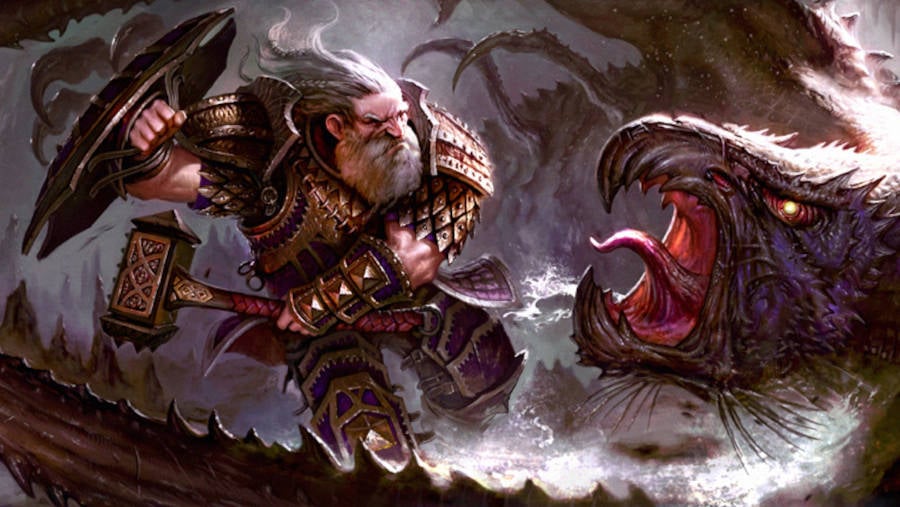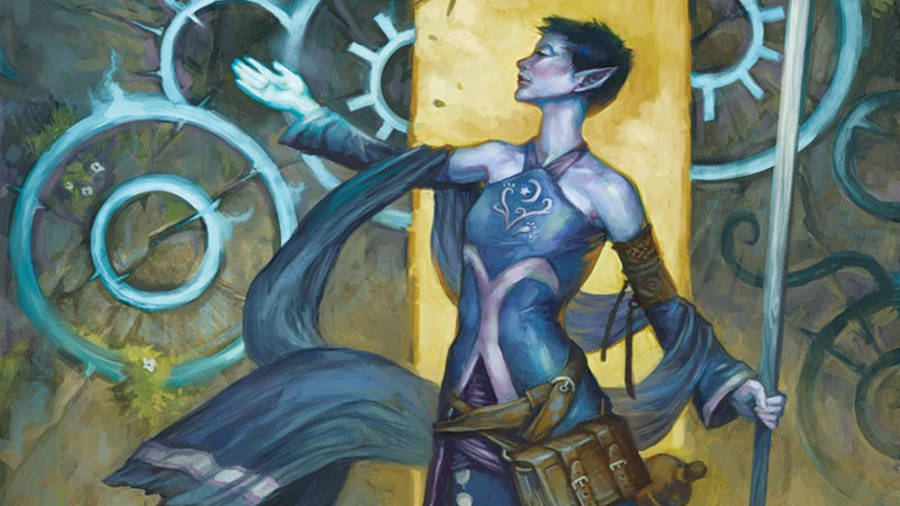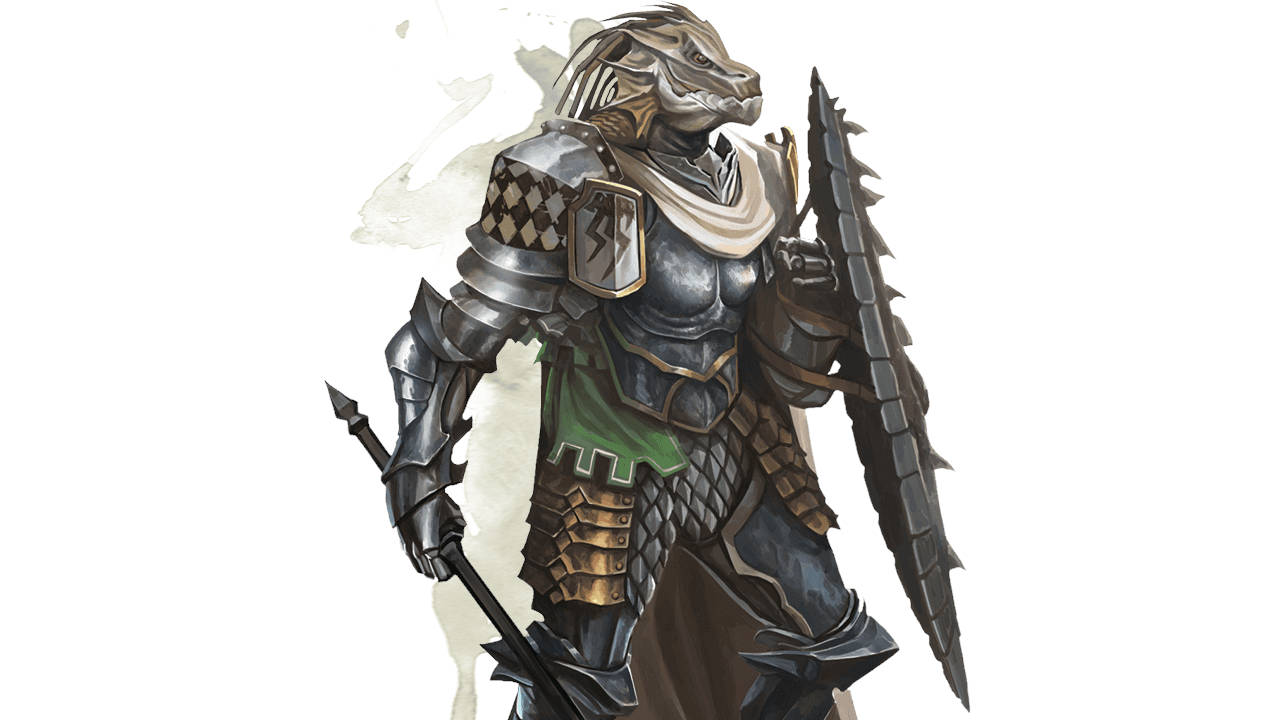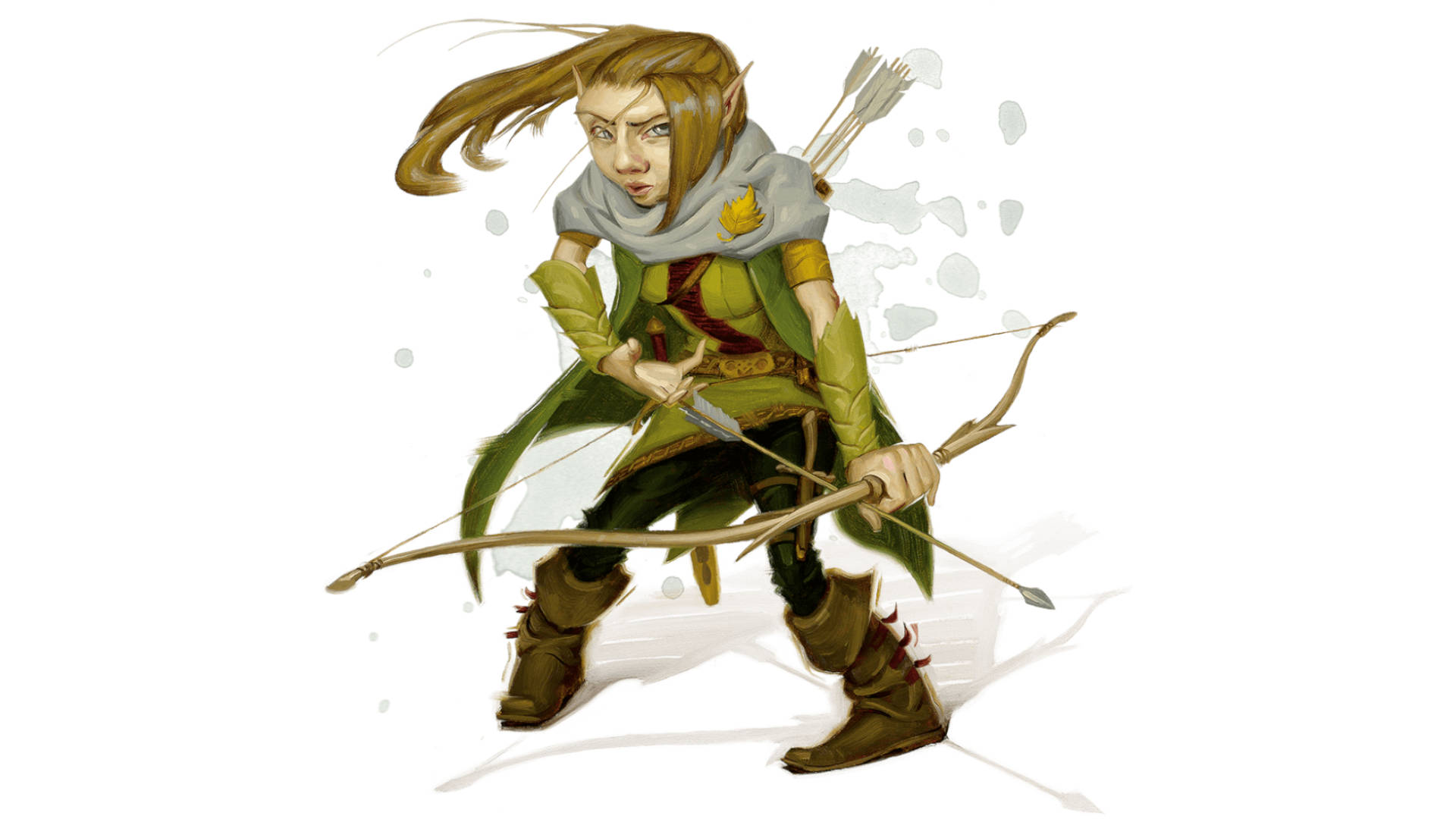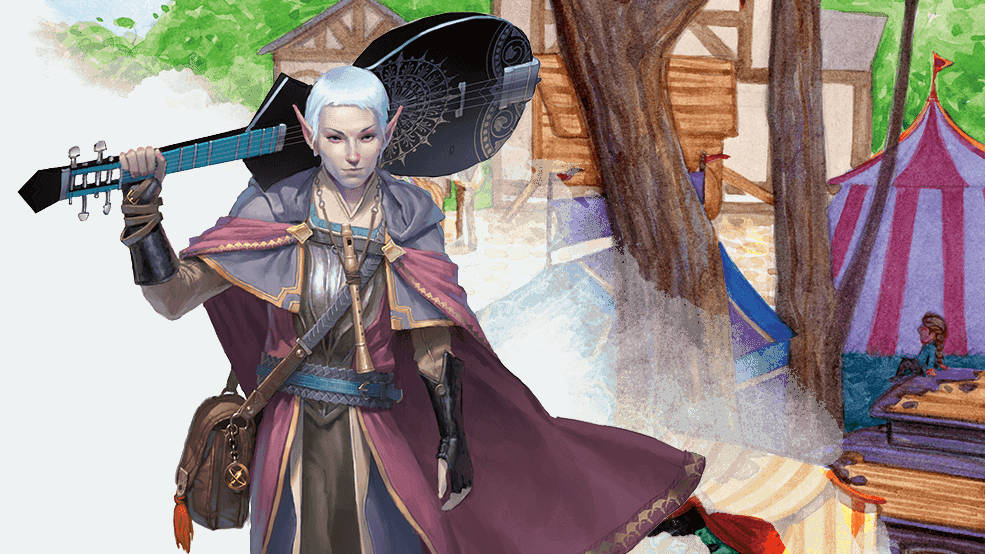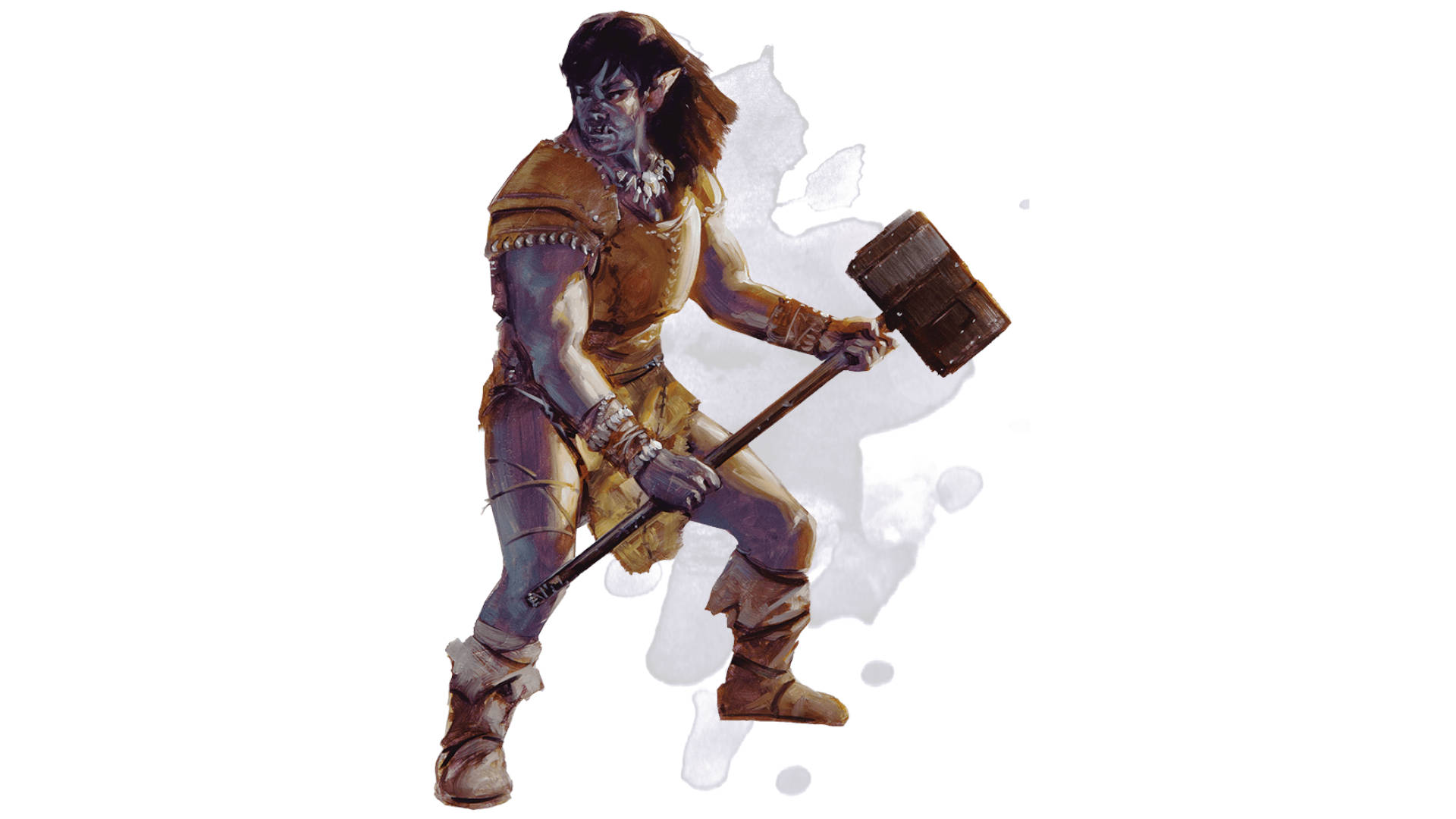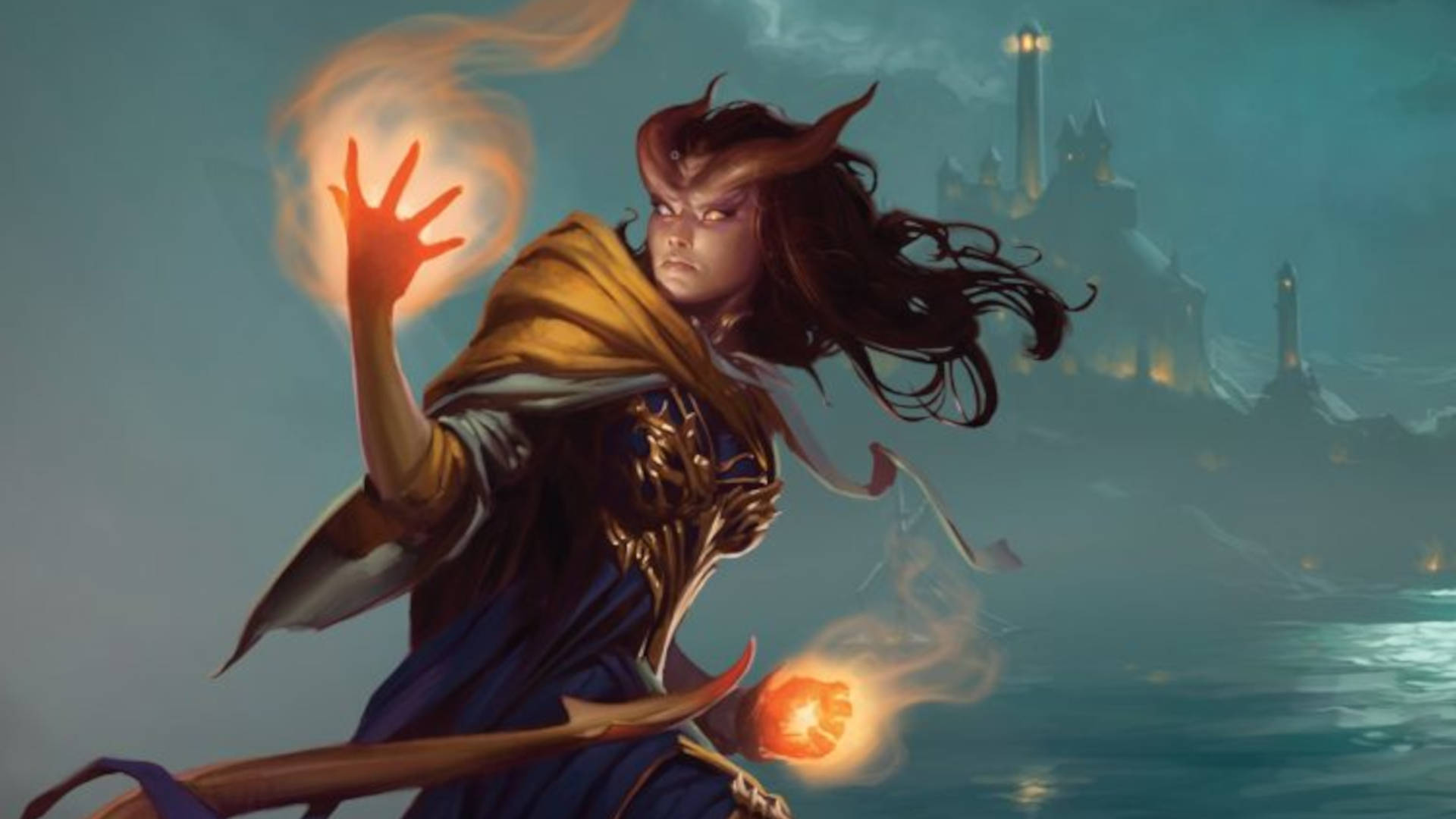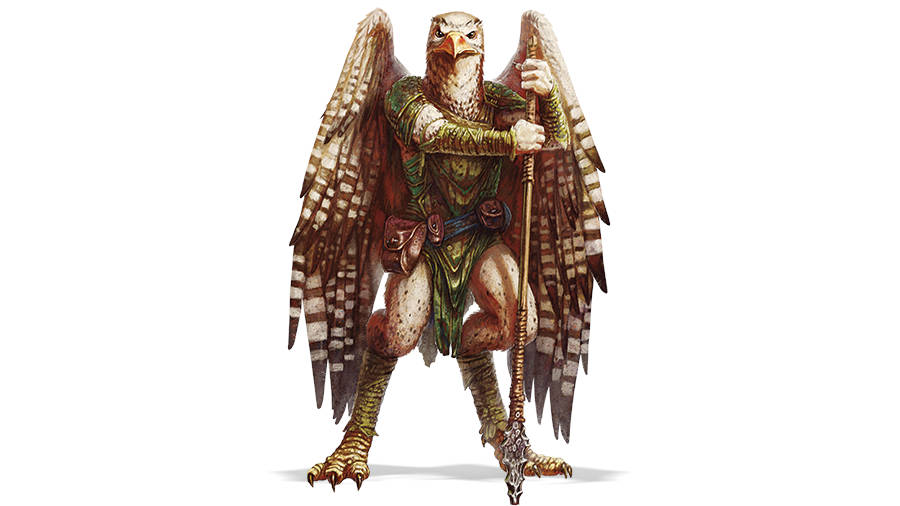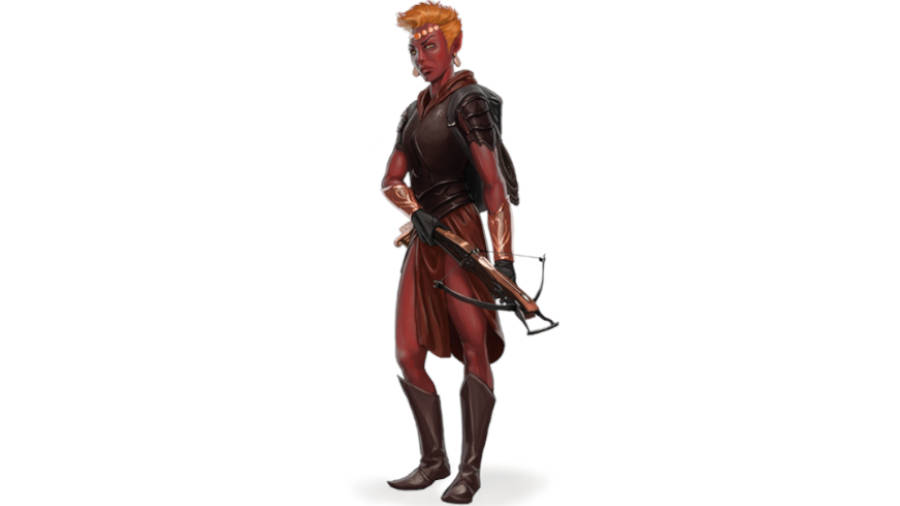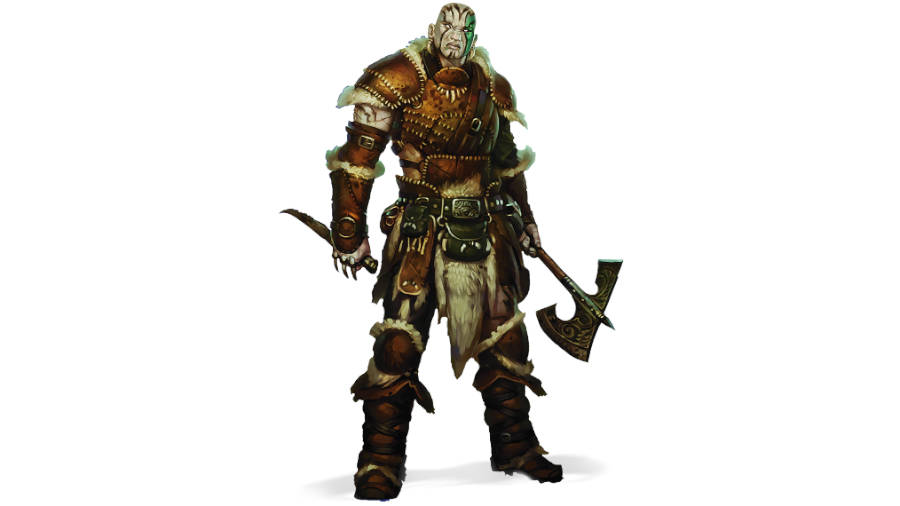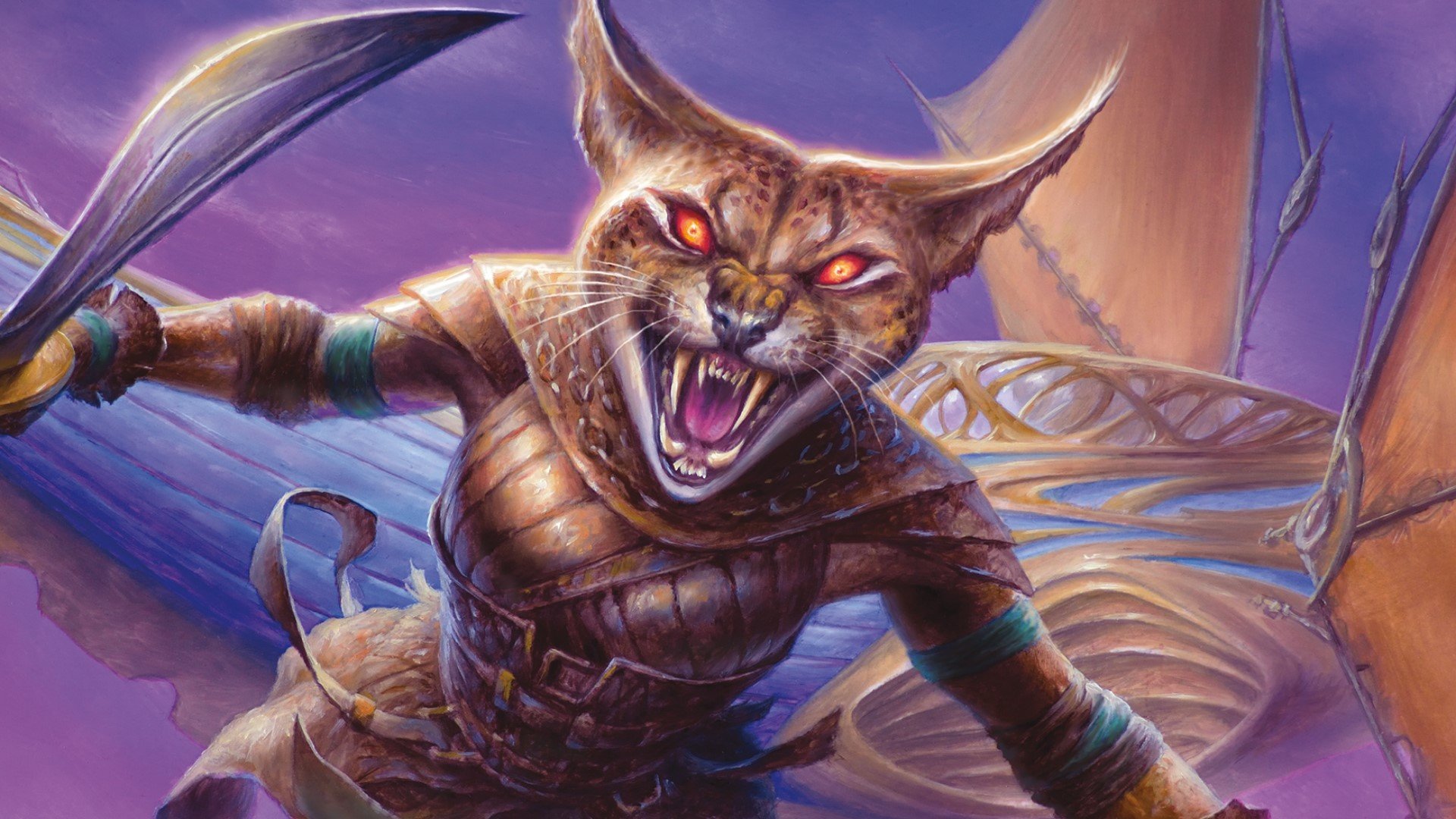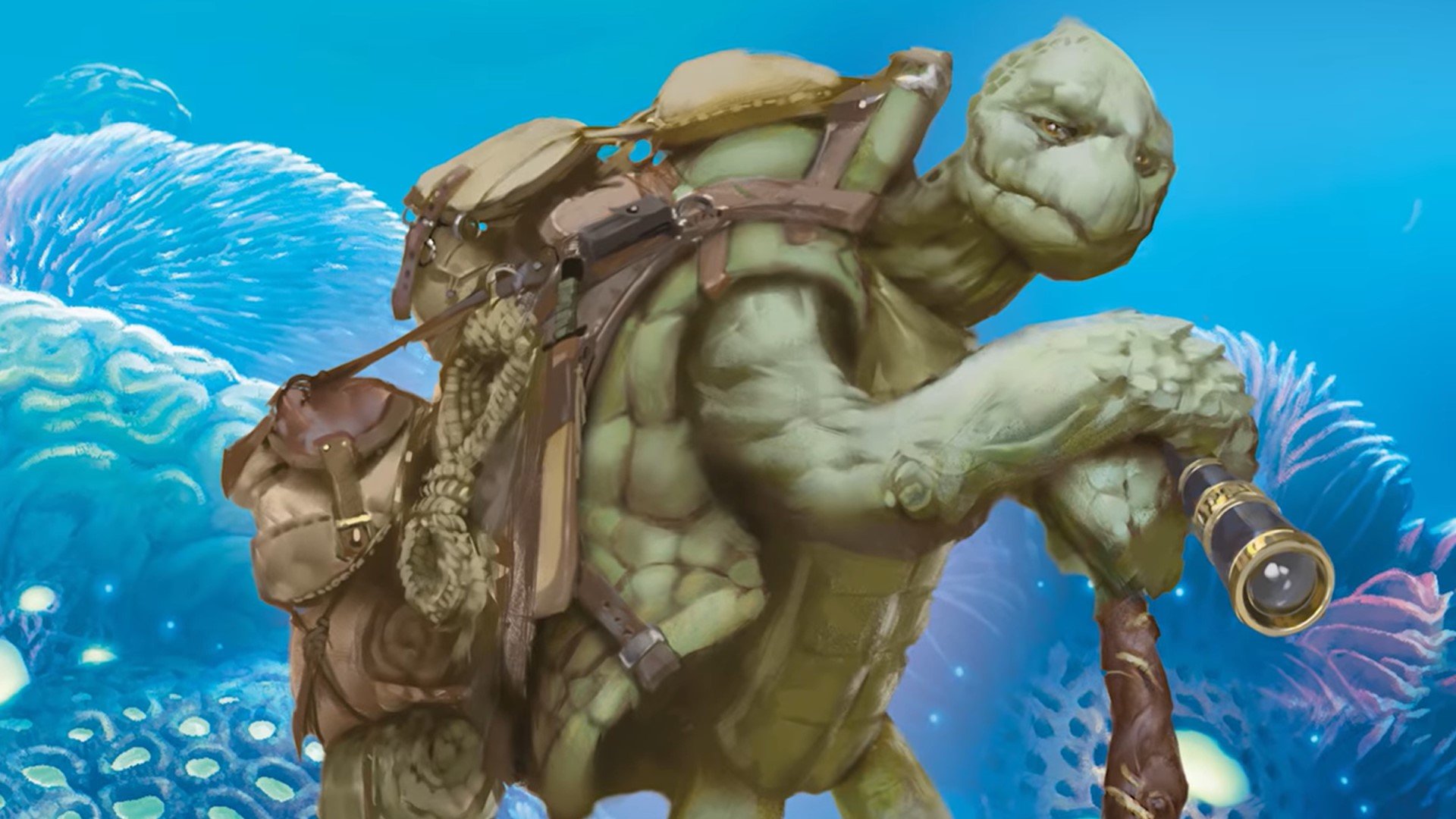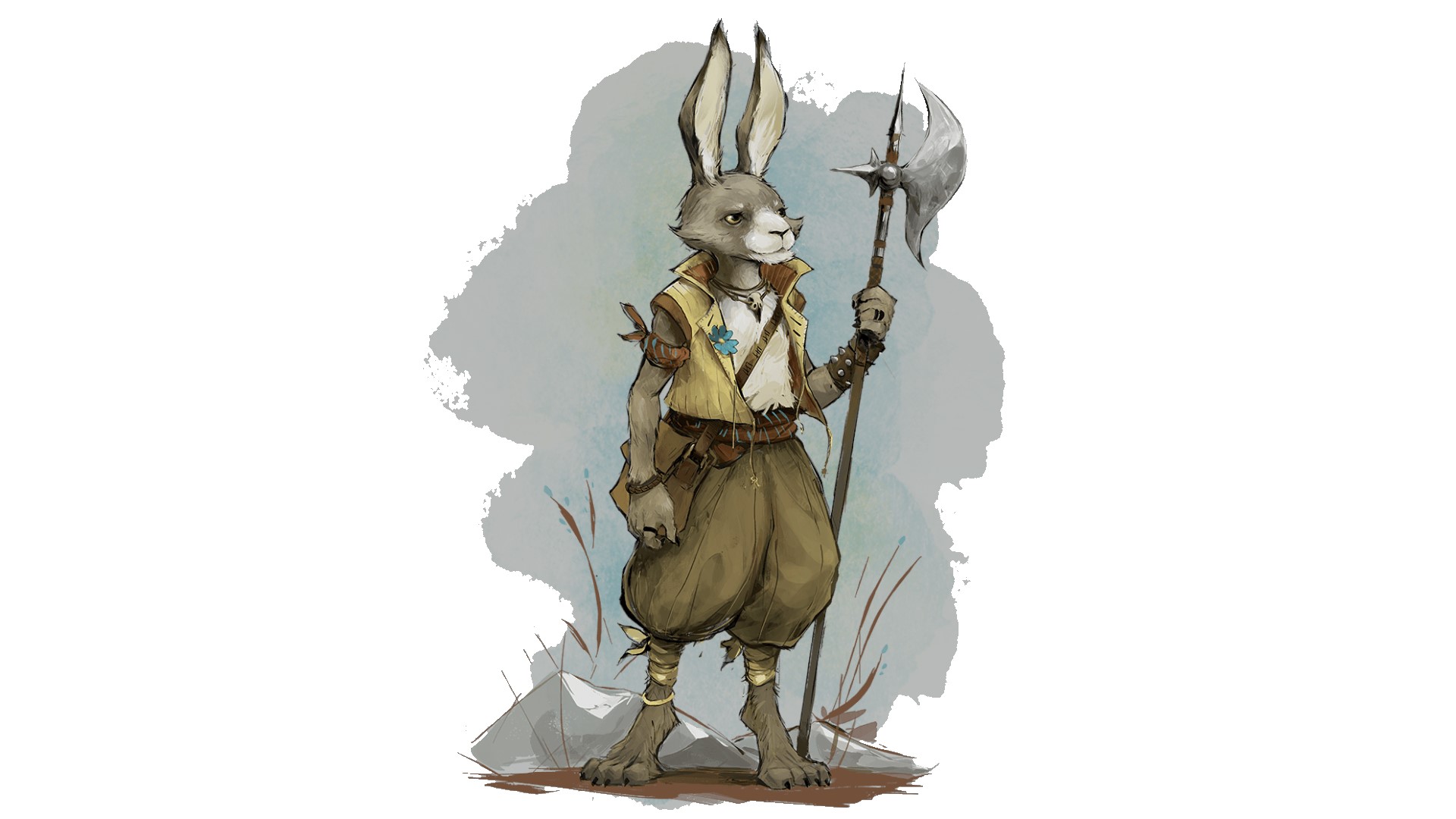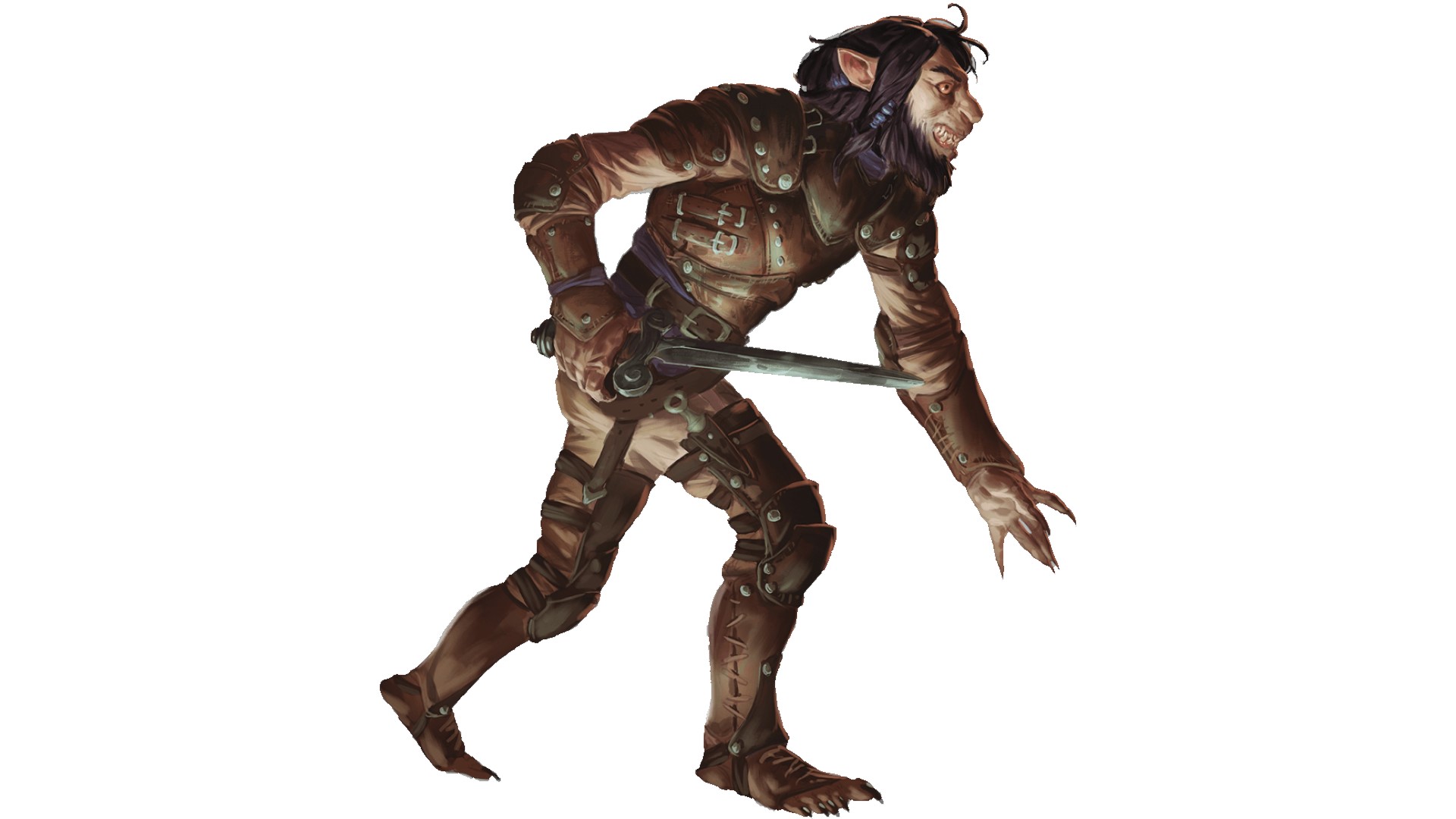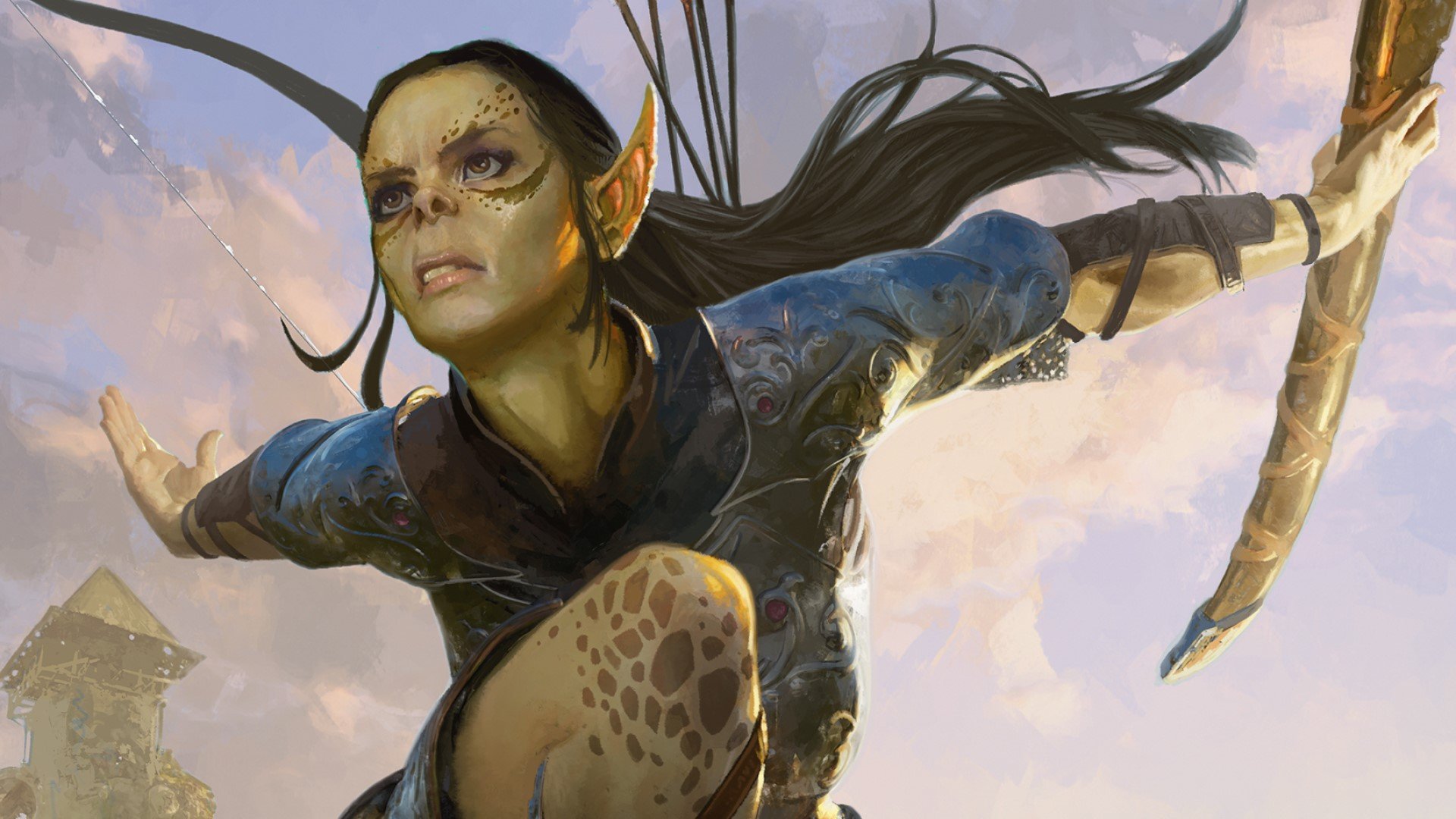The Dungeons and Dragons fantasy universe spans an impressive array of fantastical D&D races. Some conform to familiar tropes, seen far and wide across the realms of fantasy literature. Others are more unique, with few comparisons outside the pages of D&D books. All, however, bring distinct attributes, abilities, and roleplaying touchstones that are essential to creating a character.
Aside from their appearances, each of the DnD races boasts different Ability Score improvements and traits that will greatly influence the skills, capabilities, and general competencies of your character. After choosing your DnD class, picking a race is the most important decision you’ll make during character creation, and shouldn’t be hurried.
We’ll walk you through all the ‘common’ D&D races that are included in the Player’s Handbook (as well as a few extras that have been added in additional supplements over the years), pointing out their disparities, and highlighting their gameplay peculiarities. For seasoned character creators looking for a quick overview, we’ve included a concise table for each race, summarising their main stats. But for those after a little more guidance, we’ve outlined their primary strengths, DnD stats, and the classes they pair well with.
Here’s a guide to DnD races:
Do keep in mind that D&D’s representation of race shouldn’t be treated without scrutiny. The tabletop roleplaying game’s penchant for pre-determining in-game stats based on characters’ genetic categories (i.e. their race) has received increasing criticism over the last few years. Many have pointed out the problematic real-world implications that come with homogenising the psychological conditions, moral leanings, intelligence, and cultural attributes of entire races of people, as well as poorly distinguishing between psychological features and learned behaviours.
Wizards of the Coast has better acknowledged these problems in recent years. Tasha’s Cauldron of Everything, released in 2020, provided optional rules to bypass racial traits, and the lineage options introduced in 2021’s Van Richten’s Guide to Ravenloft explored character heritage as an alternative to race.
Most recently, Wizards of the Coast has removed alignments from all player and monster races, in another step towards removing racial determinism from Dungeons and Dragons entirely. Problems still persist, though, so be careful you don’t unintentionally build your character as a harmful stereotype.
Dwarf 5E
| Ability Scores | +2 Con |
| Traits | Darkvision, Dwarven Resilience, Dwarven Combat Training, Stonecutting |
| Subraces | Hill Dwarf, Mountain Dwarf |
| Suggested classes | Cleric, Fighter, Barbarian, Druid |
Familiar from across the fantasy space, D&D Dwarves closely match their representation in other media. Stout cave dwellers, with a penchant for gold and all things shiny, they live long, but can be slow to form amicable bonds with non-dwarven folk. Tending to stick within their clan, they’re hardy folk that rarely loosen their grip on a grudge.
On the tabletop, the Dwarf 5E race is one of the most durable race options. Their natural +2 Con provides a lovely HP boost, and their Dwarven Resilience ability (granting resistance against poison damage) will prove useful time and again. Similarly, Hill Dwarves’ +1 HP per level, and Mountain Dwarves’ proficiency with light and medium armour, helps withstand blow after blow.
When it comes to classes, Dwarves pair nicely with several options. The +2 Str of the Mountain Dwarf suits them to martial builds, such as Barbarians or Fighters, while the +2 Wis of Hill Dwarves makes them a great option for Clerics and Druids.
Ultimately, their toughness provides a malleability, and Dwarves can appropriately be built for any class, bar Bard, Warlock, and Sorcerer, which rely on high Cha.
DND Elf
| Ability Scores | +2 Dex |
| Traits | Darkvision, Keen Senses, Fey Ancestry |
| Subraces | High Elf, Wood Elf, Dark Elf |
| Suggested classes | Rogue, Ranger, Wizard, Warlock |
Tall, sleek, and pointy-eared, The DnD Elf is a graceful being, most at home in ethereal forests and magical realms. Generally presented as virtuous beings that love all the good things in life (art, poetry, music), they’re often carefree spirits that are just as likely to show skill with a sword as they are with a spellbook.
Elves’ +2 Dex makes them perfectly suited to the sly and speedy activities of a Rogue or Ranger, while their natural proficiency in Perception, combined with Darkvision, accustoms them to stealth. Their Fey Ancestry, granting saving throws against being charmed and preventing them being put to sleep, also comes in handy against manipulative foes.
But their subraces make them a suitable pick for virtually any class. Wood Elves, with their +1 Wis and already high Dex, make effective monks, and are an obvious choice for the nature-loving, spellcasting Druid. Similarly, a High Elf Wizard has become a staple.
The +1 Int supports spellcasting, while proficiency with bows lets you keep your frail Wizard body out of harm’s way. The Cha-focused Drow (or Dark Elf) make effective Warlocks, given their race-based cantrips circumvent the problem of limited spell slots.
Halfling 5E
| Ability Scores | +2 Dex |
| Traits | Lucky, Brave, Nimbleness |
| Subraces | Lightfoot, Stout |
| Suggested classes | Rogue, Ranger, Bard |
Small humanoids almost identical to the hobbits of JRR Tolkien’s Middle-earth, though without thick foot hair and round front doors. Living in peaceful, bucolic communities usually hidden from the conflicts of the world, they’re cheerful and curious. Most comfortable in the wide outdoors, the Halfling 5E race usually has a strong grasp of tradition and a firm understanding of the importance of community.
Like Elves, Halflings’ +2 Dex makes them particularly adept Rogues and Rangers, while their small size lets them squeeze through tight spots, and move through any area occupied by a larger creature. But it’s their saving throws that really stand out. As well as possessing Advantage against being frightened, their Lucky trait lets them reroll any ability check, saving throw, or attack roll that lands on a one, preventing catastrophes.
Halflings’ high Dex can be successfully paired with numerous classes. While stealthy builds are firm favourites, Dex-based Fighters can deal high ranged damage, and leap about the battlefield to evade enemies.
Be sure to pick a Stout Halfling for +1 Con, so you can really hold your own. The +1 Cha of Lightfoot Halflings makes them brilliant Bards, too, especially since their Lucky trait lets you reroll any daring, and probably ill-considered, roleplaying faux pas.
For a full description, check out our DnD Halfling 5E guide.
Human 5E
| Ability Scores | +1 in all Ability Scores (or +1 in two Ability Scores, one feat, and one skill proficiency) |
| Traits | – |
| Subraces | – |
| Suggested classes | Wizards, Clerics, Paladins, anything |
This lot should be pretty familiar. Humans are variable, versatile, and adaptable folks, who ambitiously explore the land for both personal gain and altruistic devotion. Their lives are short, and their empires enormous, built upon trade and war.
Humans are by far the most versatile of the common races, granting +1 to all Ability Scores. They also come in a second form – the Variant Human – providing +1 in only two Ability Scores, alongside a free feat and proficiency in one skill.
Given this is the only way to get a feat at first level, and doesn’t sacrifice an Ability improvement, you’ll definitely want to use the Variant Human if you’re basing your character around feats.
As for classes, Humans are highly malleable. Choosing two ability scores to focus on is particularly useful for classes that utilise spellcasting alongside martial attacks, such as battle Wizards, Clerics, or Paladins. But, really, you can use a Human for anything. They’re sticks of clay, ready to be moulded into whatever form you choose.
Dragonborn
| Ability Scores | +2 Str, +1 Cha |
| Traits | Breath Weapon, Damage Resistance |
| Subraces | Draconic Ancestry |
| Suggested classes | Paladin, Barbarian, Warlock |
Humanoid dragons, Dragonborn are an aged race split into devoted clans. Imbued with the blood of dragons, they aren’t commonly seen across the worlds of D&D, and are generally forthright, holding the honour of their clan in high esteem.
Their +2 Str and +1 Cha make a nicely balanced Ability Score range, but it’s their natural Breath Weapon that makes the Dragonborn stand out. Able to exhale a force of destructive energy that deals 2d6 damage on a failed Constitution saving throw, they’ve got an ace in the hole straight out the gates.
Its damage and difficulty class will increase as you level, and your chosen Draconic Ancestry will determine its damage type, as well as your character’s resistances.
When picking a class, choose any that leverages Str or Cha. Barbarian is a good pick if you fancy rushing into the heat of battle, wielding a big axe, and crushing skulls. Equally, The Charisma-focused spellcasting of Warlocks is well suited to Dragonborn, and their Breath Weapon provides a nice compliment to the class’s limited spell slots. But if you want to leverage both Ability specialities, Paladin is the way to go: you’ll be dishing out high melee damage, while channelling your deity’s magic.
Gnome 5E
| Ability Scores | +2 Int |
| Traits | Small, Darkvision, Gnome Cunning |
| Subraces | Forest Gnome, Rock Gnome |
| Suggested classes | Wizard, Rogue |
Vibrant and expressive, Gnomes are the happiest race in D&D. Living within small burrows in forests and hillsides, they’re often styled as a curious race that enjoys the thrill of adventure, and the prospect of a reward. Not cave-loving Dwarves, nor pastoral Halflings, the Gnome 5E race is more similar to the fairies of folklore.
When it comes to adventuring, they’re astute and cunning, with +2 Intelligence and advantage on all Int, Wis, and Cha saving throws against magic. Alone, these aren’t hugely beneficial (especially compared with the Variant human), but can be combined with the Gnome subraces for a few effective builds.
The Forest Gnome’s +1 Dex gives the opportunity to create a magically-inclined Rogue, and its Speak With Small Beasts trait is always fun to mess around with. The Rock Gnome’s +1 Con, on the other hand, makes it a great pick if you’re creating a classic Gnome Wizard, but fancy adding some muscles under their robes. Although their effective class options are few compared to other races, when Gnomes excel, they really excel.
Half-elf 5E
| Ability Scores | +2 Cha, +1 any Ability Score |
| Traits | Darkvision, Fey Ancestry, Skill Versatility |
| Subraces | – |
| Suggested classes | Warlock, Sorcerer, Monk |
Born of Human and Elf parents, Half-elves take bits from both of their ancestral lines; sometimes the good, sometimes the bad. Fast outgrowing their slow-to-age Elf kin, and often more emotionally mature than their Human compadres, they’re often solitary beings, with no society to call home.
And their stats are equally divergent. With +2 Cha and +1 in two other Abilities of your choice, the Half-elf 5E race is flexible, suited to eclectic builds from the off. Add to that proficiency in two skills, Darkvision, and Fey Ancestry (preventing you from being put to sleep), and you have a powerful foundation to flexibly mould to whatever you envision.
Given this, Half-elves pair nicely with any class. Their natural Cha, alongside a boost to Con and Dex, works brilliantly with a Warlock or Sorcerer. You’ll be casting offensive spells, without fear of retribution. Bard is the next obvious choice, with the two skill proficiencies broadening the class’s utility even further.
Plus, Monk, Ranger, or even Fighter can be good options. Although your Cha will be wasted in combat, Half-elves’ breadth of Ability Scores and proficiencies makes for a versatile base.
Want to learn more? Here’s our full half-elf 5e race guide.
Half-Orc 5E
| Ability Scores | +2 Str, +1 Con |
| Traits | Darkvision, Menacing, Relentless Endurance, Savage Attacks |
| Subraces | – |
| Suggested classes | Barbarian, Fighter |
With Orc and Human blood running through their veins, Half-Orcs are D&D’s way of letting you play as the classic fantasy creature, and probably the most racially problematic player race in the game. Mixing natural Orcish strength and superior Human intelligence, they’re often rejected by other races, and live within Orc tribes.
Physical might is the calling card of the Half-Orc 5E. Boasting +2 Str and +1 Con, they’re best suited to axe-toting martial builds, in which they rush into the heart of a fight, swing wildly in all directions, and come away with only a few scratches to show for it.
Relentless Endurance, which gives them an extra one HP upon dropping to zero health, is useful insurance for reckless players (or new adventurers). Savage Attack, meanwhile, lets them roll an additional attack die whenever they land a critical hit – perfect for massive bursts of damage.
Barbarian Half-Orcs are the staple, given their Ability Scores and racial traits suit them perfectly to Barbarian’s rage-fuelled, close-combat fighting. However, Half-Orcs also work nicely as Str-focused Fighters, having more opportunity to take the role of a tank within their party. Avoid any spellcasting class, but do consider a martial Paladin build, improving Cha as you level up.
Tiefling
| Ability Scores | +2 Cha, +1 Int |
| Traits | Darkvision, Hellish Resistance, Infernal Legacy |
| Subraces | – |
| Suggested classes | Warlock, Sorcerer, Wizard |
Imbued with an infernal heritage, Tieflings are best thought of as humans crossed with devils. Horns protrude from their forehead, a tail from their back, and sharp teeth fill their mouths. Often treated with suspicion, they usually gather in small communities, victim to the pernicious whispers and ignorance of others.
With +1 Int and +2 Cha, Tieflings aren’t the most diverse race, but are well-suited to spellcasting and scrutinising. Darkvision and resistance to fire damage keeps them functioning in difficult combat encounters, while Infernal Legacy (granting them the ability to cast Hellish Rebuke at third-level), provides an easy means of dealing 2d10 fire damage when you’re in a pinch.
Their natural Ability Scores pair wonderfully with any Cha-focused class, such Sorcerer or Bard, and Hellish Rebuke is particularly useful for spell slot-strapped Warlocks.
If you’d prefer something a little more unusual, test out a tanky Paladin build, and focus on gaining feats for more damage resistance.
For anyone looking to play a Tiefling, we have a full, comprehensive Tiefling 5e race guide right here on Wargamer.
Aarakocra
Found in: Mordenkainen Presents: Monsters of the Multiverse
| Ability Scores | +2 Dex, +1 Wis |
| Traits | Flight, Talons |
| Subraces | – |
| Suggested classes | Ranger, Rogue, Fighter |
Anthropomorphic birds, Aarakocra are big, beaked, and come from beyond the Material Plane. Originating in the limitless Elemental Plane of Air, they feel most at home soaring through the open sky or displaying their avian mannerisms, whether that’s showing off their tribal plumage, interspersing their speech with lyrical chirps, or picking up shiny treasures to decorate their settlements.
The standout feature of Aarakocra is their Flight ability. With a large pair of feathered wings sprouting from their back, they were the first playable D&D race that could fly, letting them soar above enemies to pick them off from afar. They also sport a pair of talons that let you deal damage equal to 1d4 + your STR modifier damage, and get +2 Dex and +1 Wis.
Given their natural Dex increase, Aaarakocra can make brilliant Rangers, especially if paired with the Archery fighting style to make use of their mobility. Rogues are also a good choice, as Flight lets you scamper about hiding places with even more ease. If you want a more martial build, go for a Fighter specialising in Finesse weapons. Fight will help you traverse the battlefield.
For a full run-through of the best Aarakocra names, classes, and builds, check out our full Aarakocra 5E race guide.
Genasi
Found in: Elemental Evil Player’s Companion
| Ability Scores | +2 Con |
| Traits | Dependent on subrace |
| Subraces | Air, Earth, Fire, and Water |
| Suggested classes | Any, dependent on subrace |
The offspring of genies and mortals, Genasi are elemental beings that manifest the power of planar magic within their blood. Although they closely resemble humans, their elemental heritage is clearly visible in their psychological attributes – such as their unusual skin tones, or hair made of fire. Said to be self-assured and driven, Genasi are often portrayed as perfectionists.
Their gameplay abilities are almost entirely defined by their subraces. Air Genasi can naturally cast the Levitate spell, and get a +1 boost to Dex; Earth Genasi get a free cast of Pass without Trace every long rest, and can walk across rough terrain for no penalty; Fire Genasi are resistant to fire and know the Produce Flame cantrip from level one; while Water Genasi gives you acid resistance, makes you amphibious, and lets you cast the Shape Water cantrip.
Each subrace pairs best with a different class. Air Genasis can work well with any non-casting Dex-based characters, while Earth Genasi are best suited to Str builds that promote rough exploration. Fire Genasi make solid Int-based spellcasters (such as Wizards), while Water Genasi can be well-rounded Clerics and Druids.
Goliath 5E
Found in: Elemental Evil Player’s Companion
| Ability Scores | +2 Str, +1 Con |
| Traits | Natural Athlete, Stone’s Endurance, Powerful Build, Mountain Born |
| Subraces | – |
| Suggested classes | Barbarian, Fighter |
Mountain-dwelling recluses, Goliaths are essentially human-sized giants. They wander mountain peaks, living a nomadic lifestyle that has made them accustomed to harsh environments and oppressive lifestyles. Those who can’t fend for themselves are cast out to the wilderness, but other races admire them for their incredible physical power.
Stats-wise, Goliaths is a meaty martial option that’s as durable as granite. Their Stone’s Endurance feature lets you reduce the damage of incoming attacks and scales well as your level, while proficiency in Athletics and the Powerful Build trait (which increases your carry capacity and lifting weight) makes you something of the party bouncer.
With +2 Str and +1 Con, Goliaths work brilliantly for any class that places Str front and centre. Barbarian is the obvious pick, as is Fighter, although melee-focused Paladins also work well. If you want to hit lots of things in close combat and come out the other side without a scratch, this is the race for you. It’s worth noting that the original Goliath Mountain Born trait was updated in Icewind Dale: Rime of the Frostmaiden to include resistance to cold damage, adding a nice additional perk.
Tabaxi
Found in: Mordenkainen Presents: Monsters of the Multiverse
| Ability scores | +1 and +2 any two, or +1 any three |
| Traits | Darkvision, Cat’s Claws, Cat’s Talent, Feline Agility |
| Subraces | – |
| Suggested classes | Rogue |
Though all Tabaxi were created by the Cat Lord, two of these humanoid felines are rarely alike. Their appearances are as varied as any real cat, and you can vary their backgrounds even further with a highly customisable set of ability scores. Despite this variation, there are a few things all Tabaxi excel in – agility and stealth.
The Feline Agility trait allows your Tabaxi to move double its speed (though you’ll need to spend a turn moving zero feet to regain this power). Cat’s Claws give your character an unarmed melee attack that deals 1d6 plus your Strength modifier in damage, and Cat’s Talent provides proficiency in Perception and Stealth. There’s also that 30ft climb stat to consider, too.
The Tabaxi’s Darkvision and Cat’s Talent trait make Rogue the obvious choice when it comes to choosing a class. However, a Monk is also a solid choice given the Tabaxi’s agile movement and unarmed fighting style options.
There are multiple sourcebooks for Tabaxi race rules in 5e, and there’s a lot of ways to build a cool Tabaxi character – check out our Tabaxi 5e race guide for more details.
Kobold
Found in: Mordenkainen Presents: Monsters of the Multiverse
| Ability scores | +1 and +2 any two, or +1 any three |
| Traits | Darkvision, Draconic Cry, Kobold Legacy |
| Subraces | – |
| Suggested classes | Fighter, Rogue |
Kobolds are rascally reptilian humanoids who are best known for trapping, tunnelling, and treasure-hunting. At least, they were back when you could only find them in a copy of the Monster Manual. The new-and-improved playable Kobold is, in fact, a highly versatile race that makes a capable character whatever calling they set their minds to. Just don’t ask them to hold any particularly heavy weapons.
Kobolds are best suited to classes that mix melee fighting with a little bit of spellcasting – hence our choice of Fighter or Rogue. This is due to their Draconic Cry, a powerful shout that can grant you advantage against enemies within ten feet, and the Kobold Legacy trait, which offers several different skills. Want to dabble in sorcery? Want to avoid being frightened? Want proficiency in Arcana, Medicine, Investigation, Survival, or Sleight of Hand? All of these are possible choices in Kobold Legacy.
For a more detailed look at the Kobold race, be sure to take a peek at our Kobold 5e race guide.
Kenku 5E
Found in: Mordenkainen Presents: Monsters of the Multiverse
| Ability scores | +1 and +2 any two, or +1 any three |
| Traits | Expert Duplication, Kenku Recall, Mimicry |
| Subraces | – |
| Suggested classes | Bard |
Not even the Kenku truly know where this unique raven-people race came from. While they’re not gifted with a raven’s wings, they do have incredible memories and the ability to perfectly mimic sounds – much of a Kenku’s vocabulary is often built from sounds and phrases it heard elsewhere.
This talent for mimicry is replicated in the Kenku’s traits. Expert Duplication gives your Kenku advantage on ability checks when copying someone else’s writing or craftwork, and Mimicry means creatures that hear you mimic a voice must pass a Wisdom (Insight) to tell it’s not the real deal – this has a difficulty class (DC) of eight plus your proficiency bonus and Charisma modifier.
Finally, there’s Kenku Recall. Thanks to their exceptionally good memories, a Kenku 5E character has proficiency in two skills of your choice. You also get to give yourself advantage before rolling on a check for one of these skills, and you can do this a number of times equal to your proficiency bonus per long rest.
Thanks to Kenku Recall giving you extra proficiency in pretty much anything – plus the recent changes to ability scores for fantastical races in Monsters of the Multiverse – Kenku are an optimal choice for almost any DnD class. We’d suggest Bard is perhaps the best choice of all – this class gets the most thematically out of the Mimicry trait, and Bardic Expertise combined with Kenku Recall make for some powerful skill checks.
Read our full Kenku 5E race guide for more information.
Tortle 5E
Found in: Mordenkainen’s Monsters of the Multiverse
| Ability scores | +1 and +2 any two, or +1 any three |
| Traits | Claws, Hold Breath, Natural Armour, Nature’s Intuition, Shell Defence |
| Subraces | – |
| Suggested classes | Druid, Ranger |
Tortles carry their homes on their back, so the world is theirs to explore and admire as they see fit. Naturally, this makes them a pretty good fit for a life of adventuring – and they have plenty of other skills that make them even more suitable for the fantasy hero lifestyle.
The Tortle 5E race may look like a tortoise, but there’s nothing slow or dull about them. They’re able to deal unarmed slashing damage with their claws, and they can hold their breath for an hour. Their Shell Defence allows them to gain advantage on Strength and Constitution rolls (though at the cost of their Dexterity and movement, as they retreat into their shell to do so).
Their natural armour gives them an AC of 17, and Nature’s Intuition gives them proficiency in Animal Handling, Medicine, Nature, Perception, Stealth, or Survival. All-in-all, this is one hardy race – and one that makes a solid choice regardless of what class you have in mind for your character.
To learn more, be sure to check out our DnD Tortle 5e guide.
Harengon
Found in: Mordenkainen’s Monsters of the Multiverse
| Ability scores | +1 and +2 any two, or +1 any three |
| Traits | Hare-Trigger, Leporine Senses, Lucky Footwork, Rabbit Hop |
| Subraces | – |
| Suggested classes | Bard, Rogue, Ranger |
The Harengon are a race of rabbit folk gifted with the ability to look and leap. They originate in the Feywild, so they’ve always got a little Fey luck on their side.
Leporine Senses gives Harengon proficiency in Perception, while Hare-Trigger allows them to add their proficiency bonus to initiative rolls. Thanks to Lucky Footwork, Harengon can also make a last-ditch effort to recover on a failed Dexterity saving throw – a d4 can be rolled and added to the save, potentially changing that failure into a success.
The Harengon can also jump a number of feet equal to five times your proficiency bonus as a bonus action. This won’t trigger opportunity attacks either.
The Harengon’s hare-like agility lends itself to a wide variety of DnD classes. Supporting classes like the Bard will find it very useful to get a leg-up in the initiative order, as they can cast their buff spells early.
Combat-focused classes benefit from this too, but the Harengon’s ability to move around the battlefield easily and without provoking opportunity attacks helps you set up a strong offence. Plus, there are plenty of classes, like the Rogue and Ranger, that can get a lot of use out of the extra Wisdom Perception proficiency.
Shifter 5E
| Ability scores | – |
| Traits | Darkvision, Bestial Instincts, Shifting |
| Subraces | – |
| Suggested classes | Barbarian, Fighter |
The Shifter 5E race is often called the ‘weretouced’ thanks to their lycanthrope ancestors. Though not full were-beasties, Shifters are gifted with some transformation abilities – most of which make them pretty formidable in battle.
We’ve not included the Shifter’s ability scores here as these can be quite flexible. If your Shifter comes from a family of humans but has a lycanthrope parent, they’d have a human’s ability scores. Likewise, you could also be a member of one of the Fantastical Races and end up using these stats instead.
Bestial Instincts means Shifters have a natural proficiency in Acrobatics, Athletics, Intimidation, or Survival. The fun really starts with Shifting, though – this allows you to become a more beastly version of yourself for up to a minute. This grants you temporary hit points and one of four additional benefits:
- Beasthide – +1d6 temporary hit points and +1 AC
- Longtooth – You can make unarmed strikes with your fangs that deal 1D6 + Strength modifier piercing damage
- Swiftstride – +10 speed, and you can move 10ft as a reaction if a creature ends its turn five feet in front of you without triggering opportunity attacks
- Wildhunt – Advantage on Wisdom checks and no creature within 30ft can attack with advantage against you
Githyanki
| Ability score increases | +1 and +2 any two, or +1 any three |
| Traits | Astral Knowledge, Githyanki Psionics, Psychic Resilience |
| Subraces | – |
| Best classes | Fighter, Bard |
The Githyanki and their cousins, the Githzerai, were once trapped in servitude to the Mind Flayers. The two groups eventually escaped their masters and went their separate ways, but not before picking up some psionic abilities. Currently, you’ll find the Githyanki living as immortals in the Astral Plane.
Githyanki have a natural resistance to psychic damage, and all that time travelling the Astral Plane has given them profound Astral Knowledge. This means, during a long rest, a Githyanki gets proficiency in any skill, weapon, or tool from the Player’s Handbook until their next long rest. Skill-heavy classes like the Bard can get a lot of mileage out of this.
Githyanki Psionics also gives this race some spellcasting perks. Githyanki automatically know Mage Hand 5E, and they pick up Jump and Misty Step as they level up. These spells can be a big help for classes that spend a lot of time in melee combat but might not have the best mobility.
Source: Wargamer



